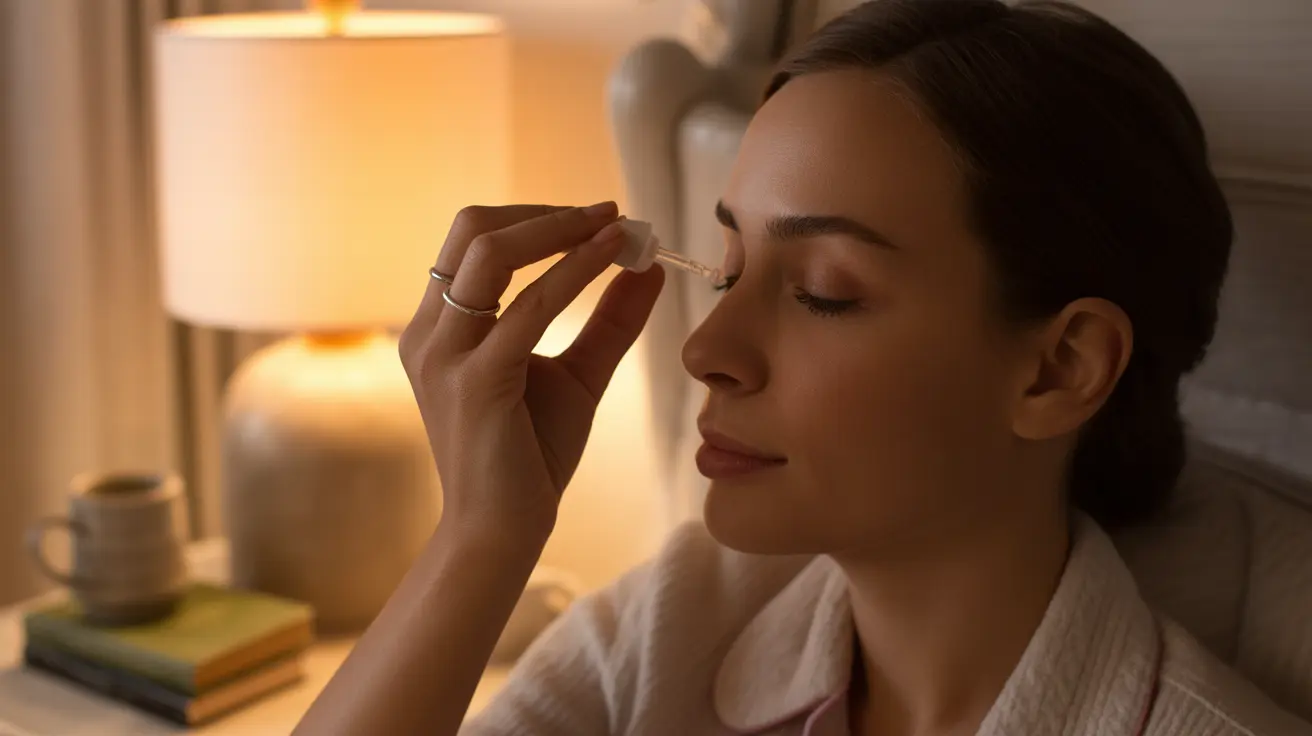For millions of people suffering from dry eyes, nighttime can be particularly challenging. Using eye drops before bed is a crucial step in managing dry eye symptoms and ensuring comfortable, refreshing sleep. This comprehensive guide will help you understand the importance of nighttime eye care and how to maximize the benefits of using eye drops before bedtime.
Whether you're dealing with chronic dry eye or occasional discomfort, establishing an effective evening eye care routine can make a significant difference in your eye health and comfort levels throughout the night and into the next morning.
The Importance of Nighttime Eye Care
During sleep, our eyes naturally produce fewer tears, which can exacerbate dry eye symptoms. Using eye drops before bed helps maintain proper eye lubrication throughout the night, preventing discomfort and potential damage to the eye's surface. This protective layer of moisture is especially important because our eyes don't blink during sleep to redistribute natural tears.
Choosing the Right Eye Drops for Nighttime Use
Not all eye drops are created equal when it comes to nighttime use. For optimal overnight relief, consider these options:
Artificial Tears
These provide basic lubrication and are suitable for mild dry eye symptoms. Look for preservative-free options to minimize the risk of irritation.
Lubricating Ointments
These thicker formulations offer longer-lasting moisture and protection throughout the night. While they may temporarily blur vision, this makes them ideal for bedtime use.
Prescription Eye Drops
For severe dry eye conditions, your doctor may prescribe specialized drops that help increase natural tear production or reduce inflammation.
Proper Application Techniques
To get the most benefit from your eye drops before bed, follow these essential steps:
- Wash your hands thoroughly
- Tilt your head back slightly
- Pull down your lower eyelid gently
- Hold the dropper above your eye without touching it
- Apply the recommended number of drops
- Close your eyes gently for 1-2 minutes
- Blot excess moisture with a clean tissue
Additional Nighttime Tips for Dry Eye Relief
Complement your eye drop routine with these helpful practices:
- Use a humidifier in your bedroom
- Position your ceiling fan away from your face
- Avoid digital screens for at least an hour before bed
- Consider using an eye mask to reduce air exposure
- Elevate your head slightly while sleeping
Frequently Asked Questions
Why is it important to use eye drops before bed for chronic dry eye?
Using eye drops before bed is crucial because tear production naturally decreases during sleep. The drops provide essential moisture and protection when your eyes are most vulnerable, preventing damage and reducing morning discomfort.
What types of eye drops or ointments are best for overnight use to relieve dry eyes?
Lubricating ointments and preservative-free artificial tears are typically best for overnight use. Ointments provide longer-lasting protection, while preservative-free drops reduce the risk of irritation during extended exposure.
How should I properly apply eye drops before sleeping to maximize their effectiveness?
Apply drops with clean hands, lying down or tilting your head back. Keep your eyes closed for 1-2 minutes after application to allow proper absorption. If using multiple products, wait 5 minutes between applications.
Can using eye drops before bed help reduce morning dry eye symptoms like redness and irritation?
Yes, properly applied eye drops before bed can significantly reduce morning symptoms of dry eye, including redness, irritation, and that gritty sensation often experienced upon waking.
What other nighttime habits can improve dry eye symptoms along with using eye drops before sleeping?
Beneficial nighttime habits include using a humidifier, avoiding screen time before bed, sleeping with your head slightly elevated, and ensuring your bedroom environment isn't too dry or drafty.
Remember to consult with your eye care professional about the best specific products and routine for your individual needs, as dry eye treatment should be tailored to your particular condition and symptoms.




